Excerpts from Jim Conrad's
Naturalist Newsletter
from the March 20, 2016 Newsletter issued from Hacienda Chichen Resort beside Chichén Itzá Ruins; limestone bedrock; elevation ~39m (~128ft), N20.675°, W88.569°; central Yucatán state, MÉXICO
"TREE CROTON"
The genus Croton has several species in the Yucatan Peninsula, and is so commonly encountered that it quickly becomes familiar. Crotons are members of the big Euphorbia Family, the Euphorbiaceae, and normally they're woody shrubs or small trees, or at least semi-woody bushes. They bear unisexual flowers and typically the vegetative parts are conspicuously covered with tiny white to rusty-colored scales imparting to the plant a silvery to rusty "scurfy" look. Below, you can see a flowering branch of a woody, eight-ft-tall Croton (2.5m) encountered this week:

Though Croton flowers are unisexual, both sexes appear on a single plant, the plant then said to be "monoecious." Below, you can see the tiny male flowers of this plant, bearing stamens but no female parts:
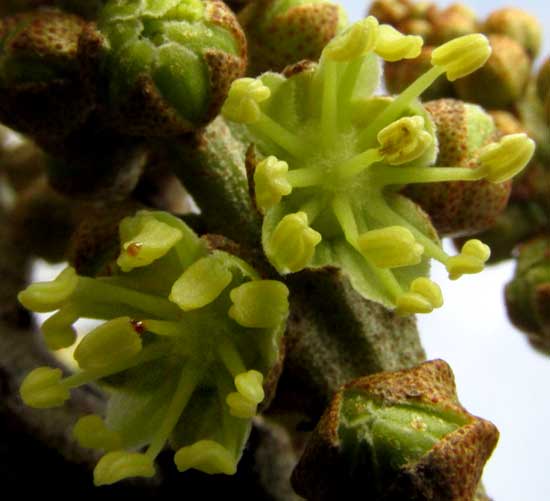
Notice how in those flowers' centers, where you expect the ovary's stigma and style to appear, there's a stamen, and that looks weird. And note the thick covering of rusty scales on the sepals. Below, compare those flowers with a female one:
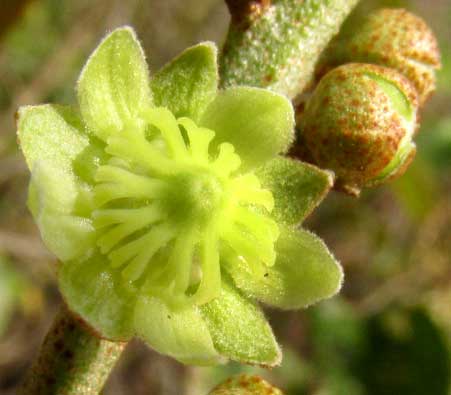
The starfish-like structure occupying the tiny flower's center consists of a glorified stigma/style structure overarching the ovary. The blossom's five petals are a little more rounded at their tips than the five sepals', with whom they alternate. It's also a strange flower, but so small that most folks never notice it.
In the tropics the genus Croton isn't well studied and from what I can gather in the literature taxonomists are just waiting for someone to come along and bring order to the group. As things stand now, our plant seems best assigned the name CROTON ARBOREUS, though there's another species, Croton reflexifolius, which seems to be about the same. Croton arboreus is described as endemic to southern Mexico. As such, it bears no English name, though with the species name of "arboreus" it's hard to not call it "Tree Croton," the quotation marks around the name meaning that the name is being invented here.
Whatever it's called, I imagine that someday a student will find these pictures and remarks, and be glad to have them.
from the April 3, 2016 Newsletter issued from Hacienda Chichen Resort beside Chichén Itzá Ruins; limestone bedrock; elevation ~39m (~128ft), N20.675°, W88.569°; central Yucatán state, MÉXICO
"TREE CROTON" FRUITING
Last month we looked at a "Tree Croton" just beginning to flower. Now the species is fruiting. Also, now that the flowering racemes are fully developed, we can see that the close-packed, white flowers are uncommonly eye-catching for a croton, especially in the shade, as shown as
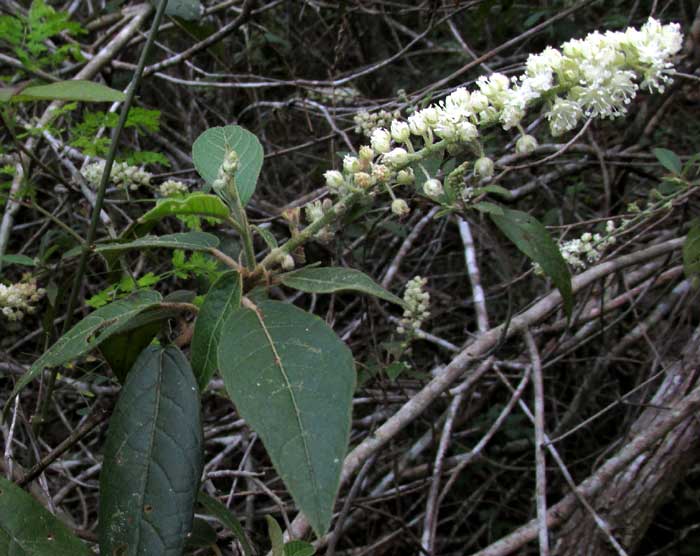
Our earlier male flower pictures showed stamens just emerging, still greenish, and the anthers not yet splitting to release pollen. Now the male flowers are white, their anthers splitting wide open scattering white pollen, shown
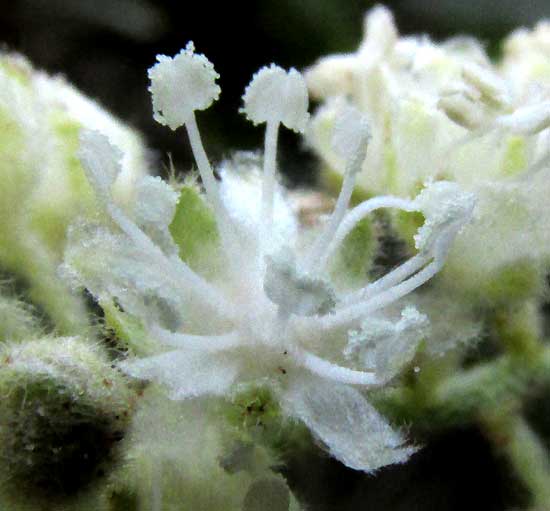
Earlier our picture of a female flower showed the green, octopus-like stigma completely covering the tiny ovary. Now the stigmas' lobes have shriveled and turned brown, and the ovaries have completely filled the calyxes, as seen below:
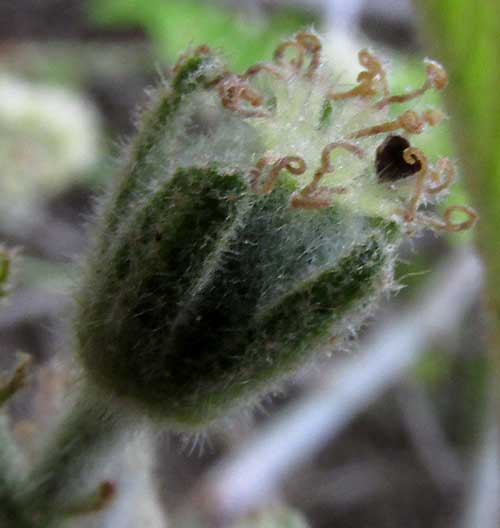
In fact, some ovaries have matured to the point of producing the species' remarkably bristly fruits, shown below:

Earlier we showed the reddish scales covering vegetative parts. Now we look at the leaves' undersides, where they're covered with a soft, woolly mat of branched hairs interspersed with rusty items that are neither the usual scales nor glandular hairs. Whatever they're called, you can see them below:

These details must make for tedious reading for anyone looking for romantic reports from the tropics, but someday they'll please a researcher or two. Also, gathering this material is my own form of meditation. Passing them along, to me, are like a classical meditator's mantras being chanted into the wind.